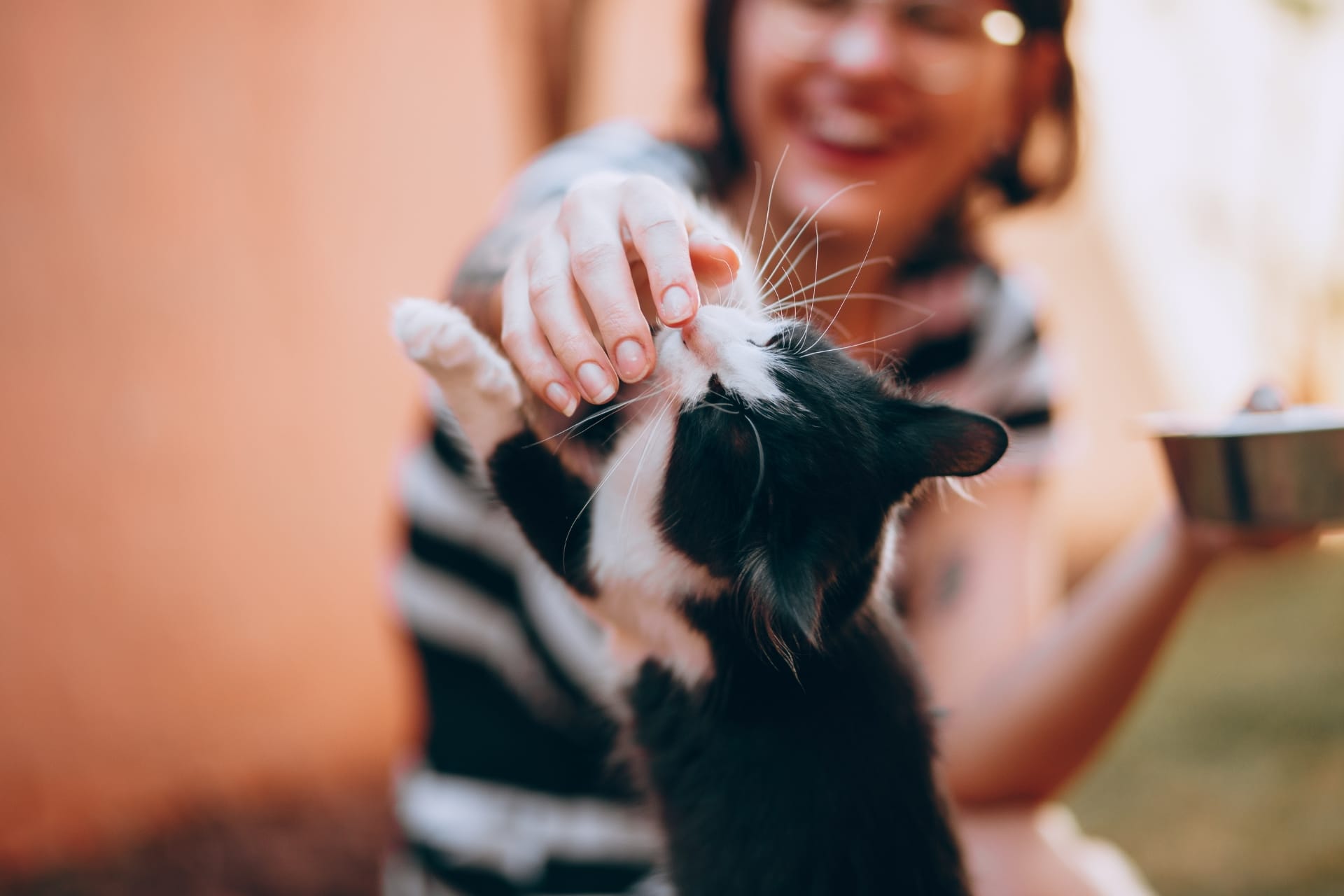TL;DR: Dog sitting tends to be more profitable, especially in cities like New York, Chicago, and LA, where overnight stays and dog walking can boost income. However, cat sitting is easier, more flexible, and lower maintenance, making it a great choice for introverts or those with limited time. The best option depends on your schedule, comfort level, and whether you prefer energetic dogs or independent cats.
Choosing Between Cat Sitting and Dog Sitting: What’s Right for You?
If you’ve started looking into cat sitting jobs or dog sitting jobs, you may be wondering: Which one is easier? Which one pays more?
The truth is: both can be rewarding and profitable. But they appeal to different lifestyles, energy levels, and schedules. Whether you’re pet-sitting as a side hustle or planning to go all in, understanding the pros and cons of each path can help you grow faster (and enjoy it more!).
Dog Sitting: Higher Energy, Higher Reward 🐶
Dog sitting often includes more active responsibilities:
Walks (sometimes multiple per day)
Feedings on a tighter schedule
Playtime and attention
Overnights in the owner’s home
But that effort comes with higher earnings. Dog owners are more likely to:
Book overnight stays
Request multiple visits per day
Pay for extras like walks, training, or grooming
What U.S. Dog Sitters Make (2025):
Drop-in visit (30 mins): $25-$40
Overnight stay: $70-$120
Add-on walk: $15-$30
Holiday rate bump: +25-50%
This makes dog sitting a smart option if:
You have a flexible schedule
You’re comfortable with various dog sizes and energy levels
You enjoy being active (and outdoors!)
You want to maximize income
But it’s not all sunshine and tail wags. Dog sitting can involve:
Barking and anxious behavior when the owner leaves
Strict potty schedules
More time commitment per booking
Cat Sitting: Low Effort, High Convenience 🐱
Cat sitting jobs are generally easier to manage. Most cats:
Don’t need walks
Are independent
Only need 1-2 visits a day
Prefer minimal interaction from strangers
A typical cat sitting visit involves:
Feeding
Litter box cleaning
Playtime (optional!)
Medication if needed (some cats require oral or topical meds)
What U.S. Cat Sitters Make (2025):
Drop-in visit: $20-$35
Overnight stay (less common): $60-$90
Medication add-on: +$5-$10
Since many cat owners are fine with 1 visit/day, or even 1 visit every 2 days, cat sitting can feel like easy money, especially if you batch multiple homes nearby.
Ideal for:
Students or 9-5 workers
People with allergies or limited physical strength
Those who prefer quieter, less demanding pets
But keep in mind:
Lower rates than dog sitting
Fewer opportunities for overnight or multi-visit gigs
Cats can be shy or hide, which makes bonding harder
At a Glance: Cat Sitting vs Dog Sitting
Cat Sitting 🐱 | Dog Sitting 🐶 | |
|---|---|---|
| Average Pay | $20–$35 per visit | $25–$40 per visit |
| Overnight Demand | Low | High |
| Time Commitment | 15–30 mins/day | 1–2 hours/day or full overnights |
| Physical Effort | Low | Medium to High |
| Ease of Care | High (self-sufficient pets) | Variable (depends on dog) |
| Client Loyalty | Moderate | High (more bookings per client) |
| Flexibility | High | Moderate |
| Best For | Quiet lifestyles, part-timers | Active lifestyles, full-timers |
Which Niche Is More Profitable?
On a per-booking basis, dog sitting almost always wins. You can earn:
More per visit
More per night
More frequent repeat bookings
(especially if you offer both sitting and walking)
However, cat sitting offers higher efficiency – particularly in dense neighborhoods:
Less time per booking
Easier to stack 4-6 daily visits
Fewer special requests or behavioral issues
Example:
3 dog overnights/week = ~$1,000
6 cat visits/day for 5 days = ~$600-700
So while dog sitting pays more, cat sitting can scale faster if you batch jobs and work in a walkable area.
Your inbox needs this
Subscribe to the Petme newsletter for weekly updates with pet care tips, tales, and member-only perks.

Why Not Both?
Here’s the secret: You don’t have to choose.
Many sitters on platforms like Petme offer both services and customize based on season or location. Some sitters even niche down by:
Dog sitting only for small breeds
Cat sitting only for multi-cat homes
Specializing in senior pets or medication administration
Offering both lets you:
Reach more pet parents
Earn year-round (even if dog clients travel more in summer)
Experiment with what fits your lifestyle best
Conclusion: Cat or Dog Sitter – What’s Right for You?
If you want ease and flexibility, cat sitting is a low-stress way to earn extra income.
If you want higher income and long-term clients, dog sitting gives you bigger bookings and more repeat work.
Ultimately, the best path depends on:
Your schedule
Your comfort with pets
Your desired earnings
Your energy level
Or… just try both and see where the tails lead 🐾
FAQs: Cat Sitting vs Dog Sitting
1. Is it easier to start with cat sitting or dog sitting?
Cat sitting is easier for beginners. Cats require less physical effort and fewer hours per visit, making it ideal for part-time sitters.
2. Which job pays more: dog sitting or cat sitting?
Dog sitting generally pays more due to overnights, walks, and add-ons. However, cat sitting can still be profitable with multiple daily visits.
3. Are overnight stays common with cat sitting?
Not really. Most cat owners prefer daily visits, not overnight stays, which limits total earnings per job.
4. Can I do both cat and dog sitting on the same app?
Yes. Platforms like Petme let you list both services and adjust your availability, pricing, and preferences separately for each.
5. What if I’m allergic to cats or afraid of big dogs?
You can filter clients and only accept bookings that match your preferences. It’s okay to specialize in small dogs or hypoallergenic cat breeds.











